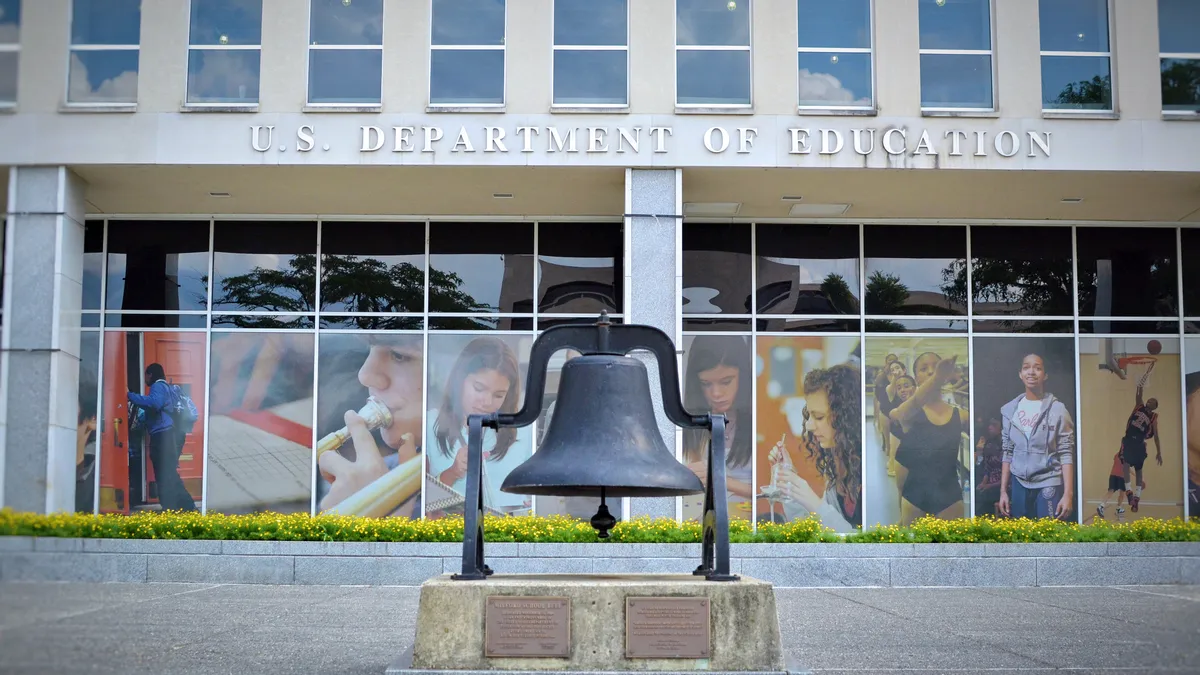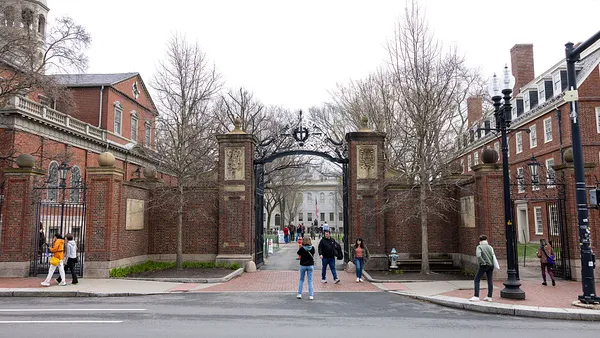Dive Brief:
- The Trump administration on Monday released its $66.6 billion budget proposal for the U.S. Department of Education, which would slash the agency's funding by about 8%.
- Among its provisions, the budget plan would eliminate subsidized federal student loans and the Public Service Loan Forgiveness (PSLF) program. It would also open Pell Grants to students in nontraditional, short-term programs and to certain students who are incarcerated.
- Higher ed experts say the cuts are largely familiar from previous budget cycles and have little chance of passing Congress.
Dive Insight:
For the last four years, the White House has proposed deep budget cuts to the Education Department that Congress hasn't just ignored — it has veered in the opposite direction.
In his fiscal 2020 plan, for instance, Trump tried to consolidate GEAR UP and TRIO, grant programs that benefit low-income students. Congress instead kept them separate and gave them cash infusions. The administration is pushing similar aid restructuring in this year's budget proposal.
A president's financial plan is typically designed to signal the administration's intentions for the country. And it is expected to undergo significant revisions with lawmakers before reaching its final form. However, observers bemoaned that Trump's fiscal 2021 request would reintroduce politically unappetizing ideas that have failed to make headway for years.
Among those is ending PSLF, which helps teachers, government employees and other public servants by canceling their debt after they make consistent payments for 10 years. This recommendation was in the previous budget and Congress did not adopt it.
Trump's proposal also attempts to erase Federal Supplemental Education Opportunity Grants (SEOG), which the administration in budget documents deemed duplicative to Pell. However, experts say they are necessary given that the latter no longer offsets a majority of the cost of a four-year education.
Although the administration says SEOG is not well-targeted to those who need it, the vast majority of its recipients also get Pell, Jonathan Fansmith, director of government relations at the American Council on Education (ACE), said in an interview. "So it supplements (the) Pell Grant," he said. "To say it's not targeted ... It seems like a cut they don't have a rationale for."
One 2017 study found Pell Grants cover less than 30% of the average cost of tuition, room and board, and other expenses at public four-year colleges, compared to nearly 80% in 1975.
In its latest proposed budget, the administration is attempting to broaden Pell to include incarcerated individuals who expect to be released within five years. However, it did not add money to the program, keeping the maximum award flat at $6,345 from fiscal 2020.
The Education Department has also proffered that students can't pay for training in certain sought-after fields because federal law prohibits them from accessing Pell. To this end, the budget request would expand Pell eligibility to include "students enrolled in high-quality short-term programs that lead to a credential, certification, or license in a high-demand field."
Fansmith said ACE has generally supported Pell being used for shorter programs, but noted others in academe have criticized the results of such offerings. Students may pursue them expecting to pay little for a credential that can help them get a high-earning job but end up struggling to find employment.
Further, the administration's latest proposal fails to spell out standards "to ensure those programs don't become just another waste of students' time and money," Clare McCann, deputy director for federal higher ed policy at left-leaning think tank New America, told Education Dive.
The budget request also radically reduces funding for Federal Work-Study to $500 million. Trump floated trimming the program during the last budget debate, but Congress boosted it to $1.2 billion. This is at odds with the administration's publicly stated desire to reinvigorate the initiative by focusing on new, career-oriented opportunities.
"It's not the same to add those elements to Work-Study, but if you have policy goals, you don't accomplish it by gutting funding," Fansmith said. "It's a really backwards way of doing it."














